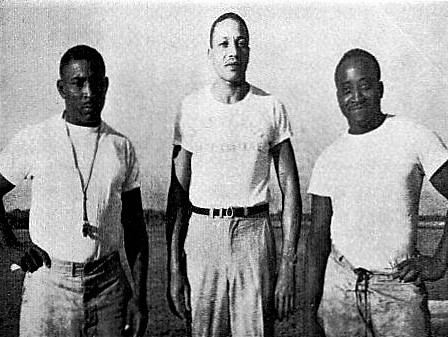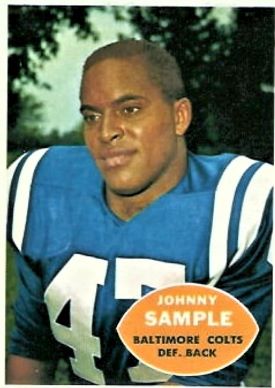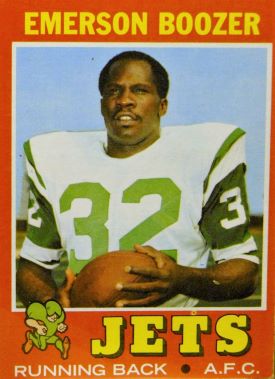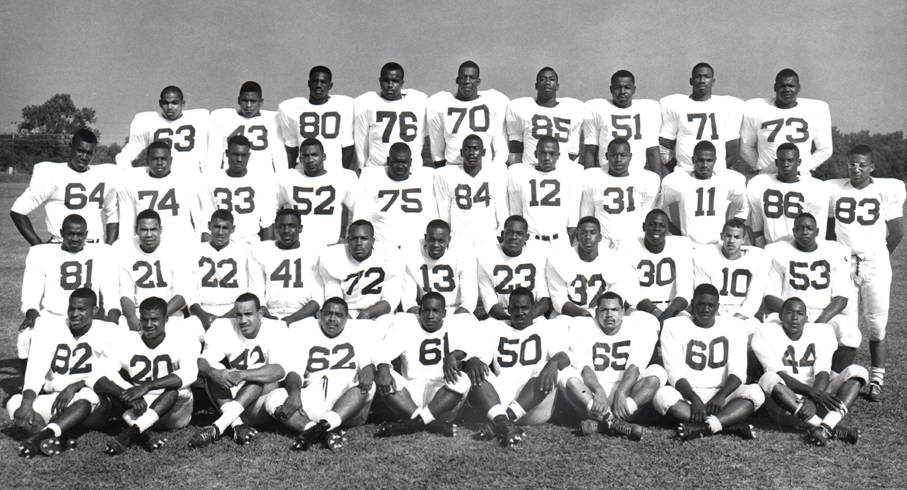Oct. 25, 1947 – The lone touchdown in the Princess Anne College Trojans’ homecoming game victory over Fayetteville State Teachers College came during the first play of the final quarter. Sylvester “Swifty” Polk threw a 38-yard pass to Mel Lewis and then kicked the extra point, making the score 7-0. The Trojans’ win was their fifth in a row.

The year 1947 was pivotal for the “Fighting Trojans” and Princess Anne College. As the team kept winning on its way to an undefeated season, things were changing all around. The college was receiving greater support from the state of Maryland, and a new leader, John Taylor Williams, took over as head of the institution.
Williams, the salutatorian of his graduating class and a three-time football All-American at Langston University in Oklahoma, brought new ideas and a no-nonsense attitude to the job of college president. His strategy was to expand academic offerings and to build a winning athletic program.
By the fall of 1948, the college had a new name – Maryland State College – and as campus legend has it, a new mascot – a Hawk. J.C. “Rooster” Coffee, who led the 1947 Trojans to an undefeated season, stepped aside to become an assistant under Vernon “Skip” McCain, whom Williams hired from Tennessee State to be athletics director, head basketball coach and football coach.
Over 17 seasons leading the maroon-and-gray, McCain won 81.6 percent of his games, topping all but eight coaches in the history of the game at the time of his retirement, according to his College Football Hall of Fame biography. McCain never lost in four head-to-head games against Grambling College coached by the legendary Eddie Robinson, his 2006 HOF profile also notes.
During McCain’s tenure, the National Football League embraced integration, while the upstart American Football League aggressively signed Black players – developments that boded well for Maryland State’ alumni. McCain had turned the Hawks into a modern-era football powerhouse that made its mark on the college and professional games.
From 1958-1976, nearly three dozen players from the Princess Anne gridiron went on to professional football. Among them:

Johnny Sample: A rookie with Baltimore in 1958, Sample was part of the “greatest game ever played” when the Colts won the NFL championship with a victory over the New York Giants. In his final season in 1968, Sample had seven interceptions and suited up with fellow Hawks Emerson Boozer and Earl Christy for the New York Jets against a Baltimore Colts team that included fellow Hawks Jim Duncan and Charles Stukes. Super Bowl III, which pitted Johnny Unitas’ Colts against Joe Namath’s Jets, ended with a surprising 16-9 Jets’ victory. Sample is the only professional player to earn a championship ring playing for a winning team in the old National Football League, the defunct American Football League and the Super Bowl.
Roger Brown: A strong, towering lineman, he was drafted in the fourth round by the Detroit Lions in 1960. In 1962, Brown was named the NFL Pro Lineman of the Year and was a six-time Pro Bowl selection. He played six seasons with the Lions before being traded to the Los Angeles Rams in 1967, where he became a member of the Rams’ “Fearsome Foursome” – replacing Roosevelt Grier. Brown was inducted into the College Football Hall of Fame in 2009.
Art Shell: He finished his 14-year NFL career with the Oakland Raiders in 1982, having played in 207 regular season games, eight Pro Bowls and 23 post-season contests, including Super Bowl XI (1977) and Super Bowl XV (1981). In 1989, the late Raiders’ owner Al Davis made Shell the first African-American head football coach of the modern era. He was enshrined in the NFL Hall of Fame in August 1989.

Emerson Boozer: A sixth-round draft pick of the New York Jets in 1966, Boozer played for the franchise for 10 seasons and racked up 5,135 yards rushing. The Pittsburgh Courier named him American Football League Rookie of the Year and he was twice named to the Pro Bowl. In 1968, he teamed in the backfield with fullback Matt Snell behind quarterback Joe Namath and was an important contributor to the Super Bowl victory in just his third year in the league. Boozer was inducted into the College Football Hall of Fame in 2010.
From the first known game in 1903 – an intramural contest – through the final season of Hawk football in 1979, the Princess Anne gridiron developed athleticism, character and an infallible spirit in the young men whose footprints left an indelible impression on the institution.
For many, the collegiate football experience generated enthusiasm and camaraderie throughout the college community. Saturday afternoons were times when everyone reveled in the excitement of game day, whether it was students gathering with friends before and after the game, cheerleaders preparing to rally the crowd, members of the marching band tuning up their instruments, or the alumni returning to the campus to recapture memories.
College football, to each, was more than a game, or a season. It was an opportunity to share moments outside the classroom, meet people and make lasting friendships. It was an opportunity to bond with the team and the institution.

Other Hawks who played professionally: Mack Alston, Bill Belk, Willie Belton, Leonard Clay, Moses Denson, James Duncan, Douglas Goodwin, Harold Gray, William Gray, Carl Hairston, John Hobbs, Charlie Holmes, Gerald Irons, Art Laster, Sherman Plunkett, Charles Stukes, Frank Sumpter, William Thompson, Vernon Vaughn and Erwin Williams.

